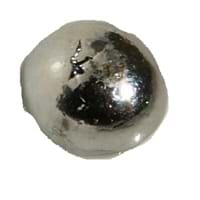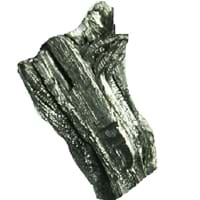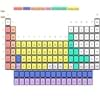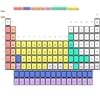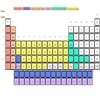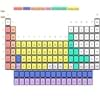Rhenium vs Dysprosium
Periodic Table
Symbol
Re
Dy
Group Number
7
11
Not Available
Period Number
6
6
Block
d block
f block
Element Family
Transition Metal
Lanthanide
CAS Number
7440155
99+
7429916
99+
Space Group Name
P63/mmc
P63/mmc
Space Group Number
194.00
5
194.00
5
Facts
Interesting Facts
- Chemical properties of Rhenium are similar to Manganese.
- Rhenium metal is created while refining Molybdenum.
- Dysprosium acts stable in air at room temperature.
- Dysprosium behaves very much like paramagnetic metal.
Sources
Found in Minerals, Mining, Ores of Minerals
Found in Minerals, Mining, Ores of Minerals
History
Who Discovered
Masataka Ogawa
Lecoq de Boisbaudran
Discovery
In 1908
In 1886
Abundance
Abundance In Universe
2 * 10-8 %
29
2 * 10-7 %
22
Abundance In Sun
~0.00000001 %
29
~0.0000002 %
25
Abundance In Meteorites
0.00 %
99+
0.00 %
33
Abundance In Earth's Crust
0.00 %
99+
0.00 %
28
Abundance In Oceans
0.00 %
34
0.00 %
35
Uses
Uses & Benefits
- Alloys of Rhenium are used as an electric contact material. It can resist withstand arc corrosion.
- Its catalysts are used in hydrogenation of fine chemicals. Its Alloy with nickel is used to produce turbine blades.
- Dysprosium metal is highly reactive due to which it pure form is not as usual as its alloy.
- Thi metals alloy is used in magnate as it is resistance to high temperature.
Industrial Uses
Aerospace Industry, Automobile Industry, Chemical Industry, Electrical Industry, Electronic Industry
NA
Medical Uses
NA
NA
Other Uses
Alloys
Alloys, Nuclear Research
Biological Properties
Toxicity
Low Toxic
Mildly Toxic
Present in Human Body
No
No
Physical Properties
Melting Point
3,180.00 °C
2
1,407.00 °C
32
Boiling Point
5,627.00 °C
2
2,562.00 °C
99+
Appearance
Physical State
Solid
Solid
Color
Silvery Gray
Silvery White
Luster
Metallic
Metallic
Hardness
Mohs Hardness
7.00
3
Not Available
Brinell Hardness
1,320.00 MPa
8
500.00 MPa
23
Vickers Hardness
1,350.00 MPa
7
540.00 MPa
20
Speed of Sound
4,700.00 m/s
15
2,710.00 m/s
33
Optical Properties
Allotropes
No
No
α Allotropes
Not Available
Not Available
β Allotropes
Not Available
Not Available
γ Allotropes
Not Available
Not Available
Chemical Properties
Chemical Formula
Re
Dy
Isotopes
Known Isotopes
33
6
29
10
Electronegativity
Pauling Electronegativity
1.90
11
1.22
38
Allred Rochow Electronegativity
1.46
15
1.10
30
Allen Electronegativity
1.60
21
Not Available
Electropositivity
Pauling Electropositivity
2.10
99+
2.78
16
Ionization Energies
1st Energy Level
760.00 kJ/mol
20
573.00 kJ/mol
99+
2nd Energy Level
1,260.00 kJ/mol
99+
1,130.00 kJ/mol
99+
3rd Energy Level
2,510.00 kJ/mol
99+
2,200.00 kJ/mol
99+
4th Energy Level
3,640.00 kJ/mol
99+
3,990.00 kJ/mol
37
Electrochemical Equivalent
0.99 g/amp-hr
99+
2.02 g/amp-hr
29
Electron Work Function
4.96 eV
7
Not Available
Other Chemical Properties
Corrosion, Ionization, Radioactive Isotopes, Solubility
Anti Corrosion, Ionization, Radioactive Isotopes, Solubility
Atomic Properties
Atomic Number
75
99+
66
99+
Electron Configuration
[Xe] 4f14 5d5 6s2
[Xe] 4f9 6s2
Crystal Structure
Hexagonal Close Packed (HCP)
Hexagonal Close Packed (HCP)
Crystal Lattice
BCC-Crystal-Structure-.jpg#100
HCP-Crystal-Structure-of-Dysprosium.jpg#100
Atom
Number of Protons
75
40
66
99+
Number of Neutrons
111
26
96
35
Number of Electrons
75
40
66
99+
Radius of an Atom
Atomic Radius
137.00 pm
40
178.00 pm
16
Covalent Radius
151.00 pm
34
192.00 pm
17
Van der Waals Radius
200.00 pm
28
229.00 pm
20
Atomic Weight
186.21 amu
36
162.50 amu
99+
Atomic Volume
8.85 cm3/mol
99+
19.00 cm3/mol
23
Adjacent Atomic Numbers
Valence Electron Potential
180.00 (-eV)
3
47.40 (-eV)
32
Lattice Constant
276.10 pm
99+
359.30 pm
37
Lattice Angles
π/2, π/2, 2 π/3
π/2, π/2, 2 π/3
Lattice C/A Ratio
1.62
3
1.57
15
Mechanical Properties
Density
Density At Room Temperature
21.02 g/cm3
12
8.54 g/cm3
99+
Density When Liquid (at m.p.)
18.90 g/cm3
4
8.37 g/cm3
25
Tensile Strength
1,070.00 MPa
3
120.00 MPa
15
Viscosity
Not Available
Not Available
Vapor Pressure
Vapor Pressure at 2000 K
0.00 (Pa)
29
Not Available
Elasticity properties
Shear Modulus
178.00 GPa
3
24.70 GPa
31
Bulk Modulus
370.00 GPa
2
40.50 GPa
31
Young's Modulus
463.00 GPa
2
61.40 GPa
33
Poisson Ratio
0.30
14
0.25
25
Other Mechanical Properties
Ductile, Malleable
Sectile
Magnetic Properties
Magnetic Characteristics
Specific Gravity
21.02
5
8.55
38
Magnetic Ordering
Paramagnetic
Paramagnetic
Electrical Properties
Electrical Property
Conductor
Conductor
Resistivity
193.00 nΩ·m
20
926.00 nΩ·m
2
Electrical Conductivity
0.05 106/cm Ω
33
0.01 106/cm Ω
99+
Electron Affinity
14.50 kJ/mol
35
50.00 kJ/mol
21
Thermal Properties
Specific Heat
0.13 J/(kg K)
39
0.17 J/(kg K)
34
Molar Heat Capacity
25.48 J/mol·K
38
27.70 J/mol·K
14
Thermal Conductivity
48.00 W/m·K
31
10.70 W/m·K
99+
Critical Temperature
Not Available
Not Available
Thermal Expansion
6.20 µm/(m·K)
99+
9.90 µm/(m·K)
40
Enthalpy
Enthalpy of Vaporization
707.10 kJ/mol
3
230.00 kJ/mol
39
Enthalpy of Fusion
33.05 kJ/mol
2
11.05 kJ/mol
32
Enthalpy of Atomization
791.00 kJ/mol
2
301.00 kJ/mol
36
Standard Molar Entropy
36.90 J/mol.K
99+
75.60 J/mol.K
7
|
||
|
||
|
